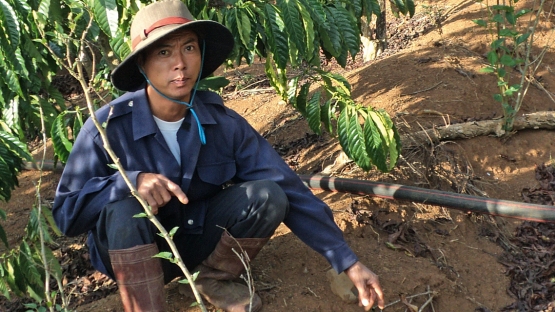Dao Thanh Canh never studied physics or chemistry in school, but he understands a thing or two about nuclear isotopes. Until a couple of years ago, much of his five-acre farm on the hills of central Viet Nam was gradually sliding away. Thanks to nuclear techniques used in determining the exact cause and source of soil erosion, his land is now stable, and his coffee plantation profitable. "We were very worried as uncertainty loomed," he said. "A few centimetres of the soil disappeared every year when we had big hail storms."
Thanh Canh is not alone. Soil degradation affects 1.9 billion hectares of land worldwide, close to two thirds of global soil resources.
Soil erosion is the main contributor to land degradation globally, leading to an annual loss of 75 billion tonnes of fertile soil, with an economic cost of about US $126 billion per year. The IAEA, in partnership with the Food and Agriculture Organization of the United Nations (FAO), helps scientists and farmers in measuring and controlling soil erosion through the use of various nuclear techniques. These include using fallout radionuclides, which help to assess soil erosion rates, and compound specific stable isotope analysis, which assists in tracing hot spots of land degradation (see Fallout radionuclides and compound specific stable isotope analysis).
Erosion's vicious cycle
Erosion affects the top — most fertile — layer of the soil. It also carries away much of the fertilizer used in agriculture and deposits it in fresh water, where the fertilizer feeds algae, which sharply decrease water quality. "It is a double blow," said Mohammad Zaman, a soil scientist at the Joint FAO/IAEA Division of Nuclear Techniques in Food and Agriculture.
Now that we know where precisely erosion comes from, we can undertake the proper mitigation measures.





